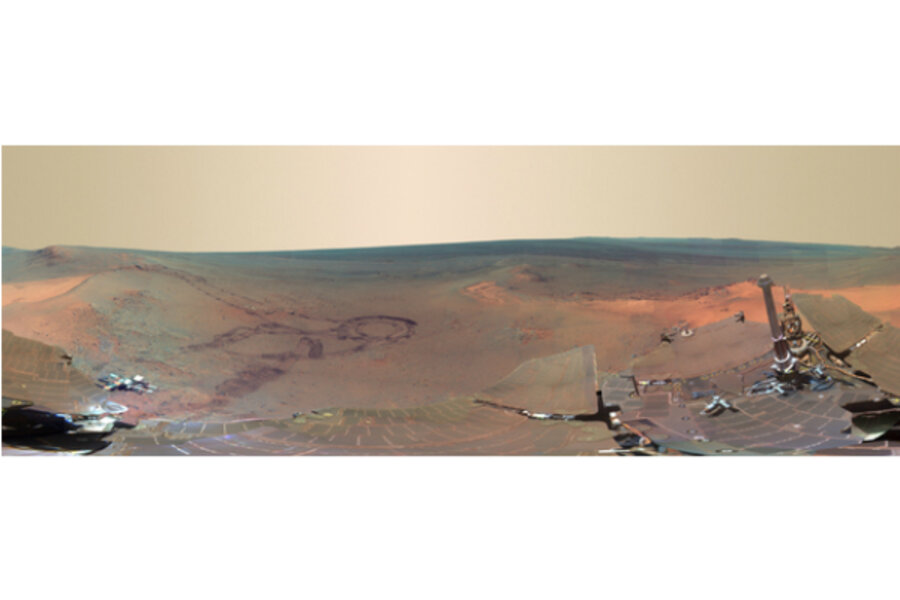Mars rover beams amazing panorama back to Earth
Loading...
A long-lived NASA rover on Mars has beamed home a stunning panoramic view of the Red Planet, a spectacular panorama that a space agency description billed as the "next best thing to being there."
The new Martian panorama was snapped by NASA's Mars rover Opportunity, a six-wheeled robot that has spent more than eight years exploring the Red Planet. The image shows a full-circle view of Mars near a spot called "Greeley Haven," where Opportunity hunkered down during its last Martian winter.
"The view provides rich geologic context for the detailed chemical and mineral work that the team did at Greeley Haven over the rover's fifth Martian winter, as well as a spectacularly detailed view of the largest impact crater that we've driven to yet with either rover over the course of the mission," said Jim Bell of Arizona State University in Tempe, the lead scientists for Opportunity's Pancam imaging system, in a statement today (July 5).
Opportunity's new Mars panorama is actually a mosaic of 817 different images combined like a giant puzzle to make one huge image. It shows a stark landscape broken only by the Opportunity rover's own tracks and the robot's solar array.
While there are varying shades of red (and even some blue) in the Mars panorama, the image is actually a false-color view. Its colors were added artificially to "enhance the differences between materials in the scene," NASA officials explained in an image description. [More Mars Photos by Opportunity Rover]
Opportunity created the Mars panorama between Dec. 21, 2011, and May 8, 2012, while it was stationed at Greeley Haven, an outcrop of rock located on the rim of the giant Endeavour crater that has been the rover's main object of study since August 2011.
Rover mission managers named the outcrop as a tribute to Mars scientist Ronald Greeley (1939-2011), who served as a mission team member and taught planetary science at Arizona State University.
"Ron Greeley was a valued colleague and friend, and this scene, with its beautiful wind-blown drifts and dunes, captures much of what Ron loved about Mars," said Steve Squyres of Cornell University, Ithaca, N.Y., principal investigator for Opportunity and Spirit.
NASA launched Opportunity and its sister rover Spirit toward Mars on a mission that was originally slated to last 90 days. The two rovers far outlasted their warranties, with Spirit exploring its Gusev Crater landing site until getting stuck in deep Martian sand. NASA declared Spirit's mission over in May 2011.
Opportunity, meanwhile, keeps on trucking across the Martian surface.
On Monday (July 2), Opportunity logged its 3,000th Martian day, which mission scientists call "sols." The rover has driven a total distance of 21.4 miles (34.4 km) since landing on Mars, according to mission managers.
Follow SPACE.com on Twitter @Spacedotcom. We're also on Facebook & Google+.
Copyright 2012 SPACE.com, a TechMediaNetwork company. All rights reserved. This material may not be published, broadcast, rewritten or redistributed.







